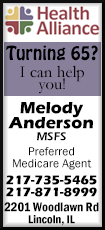|
 One of the biggest stumbling blocks to preventing cardiovascular
disease can be patients' inability to follow recommendations to do
things like stop smoking, drink in moderation, exercise more
regularly and eat well. For the current study, researchers randomly
assigned 3,532 people with at least one risk factor for heart
disease but no symptoms to get only usual care, such as lifestyle
advice or medications, or to also receive pictures of their arteries
and personalized tutorials on why the images might signal health
problems ahead. One of the biggest stumbling blocks to preventing cardiovascular
disease can be patients' inability to follow recommendations to do
things like stop smoking, drink in moderation, exercise more
regularly and eat well. For the current study, researchers randomly
assigned 3,532 people with at least one risk factor for heart
disease but no symptoms to get only usual care, such as lifestyle
advice or medications, or to also receive pictures of their arteries
and personalized tutorials on why the images might signal health
problems ahead.
One year later, people who saw the images of their own blood vessels
had fewer risk factors for heart disease than the control group of
patients who didn't see images of their own bodies, researchers
report in The Lancet.
"Smoking cessation, anti-hypertensive and cholesterol-lowering
medication, healthy diet and physical activity are the most
effective, evidence-based and cheapest therapies in medicine - as
long as individuals adhere to it long-term," said lead study author
Ulf Naslund of Umea University in Sweden.

"The major problem is not lack of therapies, but it is rather
non-adherence to these medications and lifestyle changes," Naslund
said by email. "The results in the study demonstrate one way to deal
with the big problem in prevention - non-adherence."
Study participants ranged in age from 40 to 60. They all completed
surveys about risk factors for heart disease, had blood tests to
assess risk factors like high cholesterol or high blood sugar, and
had ultrasounds of their arteries to look for thickening or
hardening of artery walls and plaque accumulation.
All participants also received information about their
cardiovascular risk factors and advice on how to adopt a healthier
lifestyle and take any needed medications.
One year later, people who had seen the pictures of their own
arteries had lower average risk scores for heart disease than they
did before they saw the images, based on one common assessment tool
known as the Framingham risk score. But in the control group,
patients' average Framingham risk score increased.
[to top of second column] |

By another measure known as the European systematic coronary risk
evaluation, people who saw pictures of their arteries improved twice
as much as patients in the control group, even though the gains
overall were modest.
Both groups also achieved lower total cholesterol by the end of the
year-long study, with greater improvements in the image group than
the control group.
Beyond its relatively short duration, the study also wasn't designed
to determine why showing patients pictures of their arteries changes
their behaviors, and if it directly influences their risk of events
like heart attacks or strokes.
Still, the images may help get a message across that just talking to
patients cannot convey, said the coauthor of an accompanying
editorial, Richard Kones of the Cardiometabolic Research Institute
in Houston, Texas.
"Many people believe they are heart-healthy when they are not,"
Kones said by email.
Heart disease prevention can be particularly challenging for people
who are relatively young and don't feel any symptoms of heart
disease, Kones said by email. Atherosclerosis, or hardening of the
arteries, can be a silent killer because it takes decades to develop
and may not be felt by patients until it's quite advanced and
difficult to treat.
"Since atherosclerosis is silent, even after physicians tell their
patients about the need to adhere to treatments, studies have shown
that patients remember only a small fraction of what they are told,"
Kones added. "Visual graphics and pictures are more effective, as
this trial found; the expression "a picture is worth a thousand
words" is hard-wired into us."
SOURCE: https://bit.ly/2FYxXPW and https://bit.ly/2BTHJP7 The
Lancet, online December 3, 2018.
[© 2018 Thomson Reuters. All rights
reserved.] Copyright 2018 Reuters. All rights reserved. This material may not be published,
broadcast, rewritten or redistributed.
Thompson Reuters is solely responsible for this content.
 |